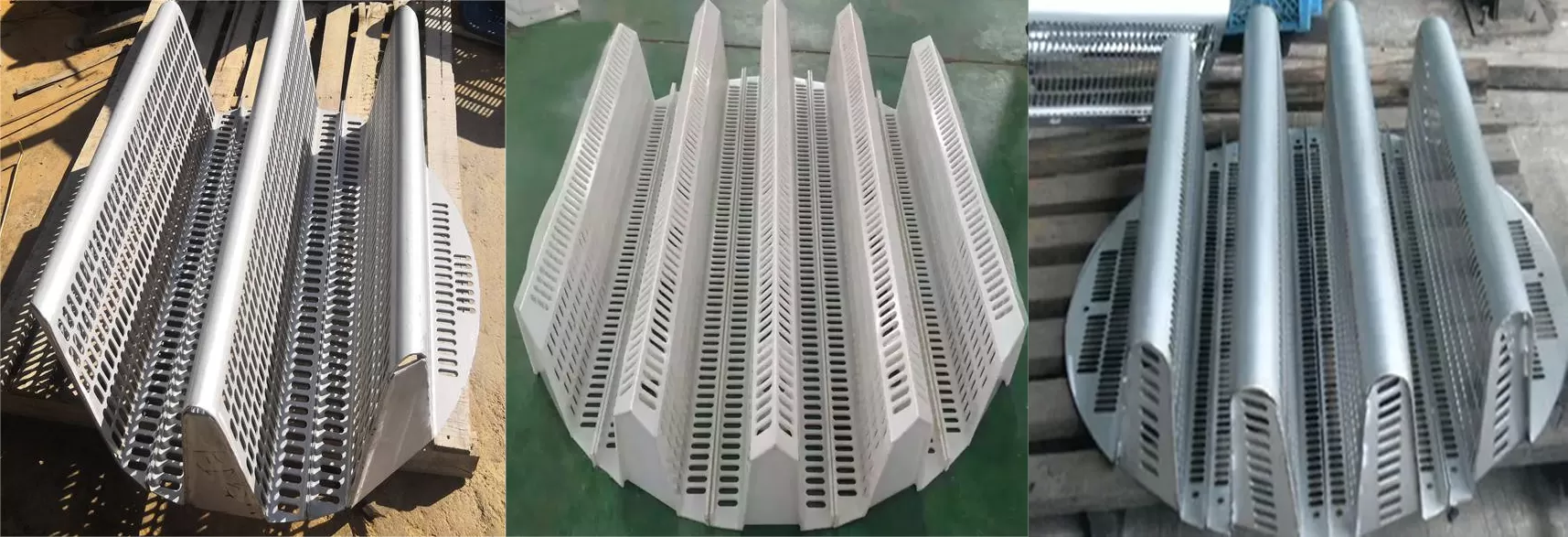
Hump support
The hump support plate is also known as the beam-type gas injection type packing support plate. It is an excellent bulk packing support device and is currently the most suitable large tower support for granular packing. It is widely used in fields such as oil refining, chemical industry, fertilizer production, ethylene production and oxygen production, and the diameters of the applied ones have reached over 10 meters. In addition, there are also bell-shaped support corrugated plates and grid-type supports, etc.

Demister
The demister is an important component within the desulfurization and denitrification absorption tower. After the gas has been treated by the absorption tower, it carries a large amount of liquid droplets, especially as the gas flow rate in the absorption tower continues to increase nowadays, the amount of liquid droplets carried by the gas will intensify. If these droplets are not removed, these slurry droplets will deposit on the surfaces of downstream equipment in the absorption tower and form scale, accelerating the corrosion of the equipment and affecting the heat exchange of the gas reheater. If the wet discharge process is adopted, it will cause "rainfall" from the chimney (emission of liquids, solids or slurry), polluting the surrounding environment. Therefore, a demister needs to be installed at the outlet of the absorption tower.
Sparger

In order to reduce the amplification effect caused by poor liquid distribution and to fully utilize the efficiency of the packing, a liquid distributor must be installed in the packed tower to evenly distribute the liquid on the top of the packing layer. The quality of the initial liquid distribution not only affects the mass transfer efficiency of the packing, but also has an impact on the operability of the packing. Therefore, the liquid distributor is a crucial internal component in the packed tower. There are many types of distributors, and the selection is mainly based on factors such as distribution quality, operability, processing capacity, gas resistance, and levelness, etc.

Tray
The tray is the core component for achieving heat and mass exchange between gas and liquid phases within a packed tower. It consists of gas-liquid contact elements (such as float valves, bubble caps, and sieve holes), receiving trays, overflow dams, liquid redistributing pipes, and supporting fastening components. Its working principle is to form a liquid layer on the surface of the tray, and the gas passes through the contact elements to disperse into bubbles, completing the mass transfer and heat transfer process in the liquid layer. Based on its structural characteristics, it can be classified into types such as sieve plate trays, float valve trays, and bubble cap trays. In industrial applications, sieve plate trays occupy a dominant position due to their high efficiency and low cost. When selecting equipment, if the tower diameter is ≤ 700 millimeters, a monolithic tray is used; if it is ≥ 800 millimeters, a segmented structure is employed .


.png)
.png)
.png)
.png)
.png)
.png)